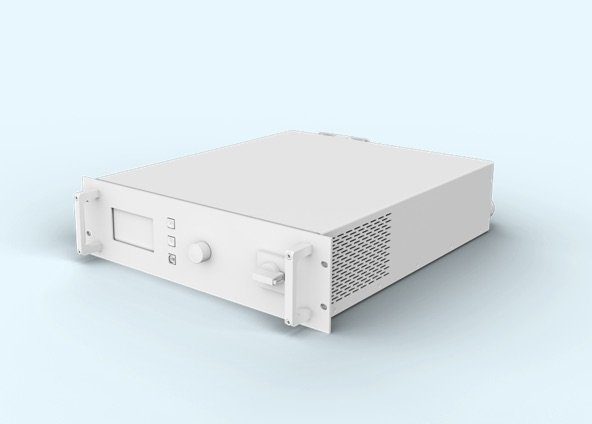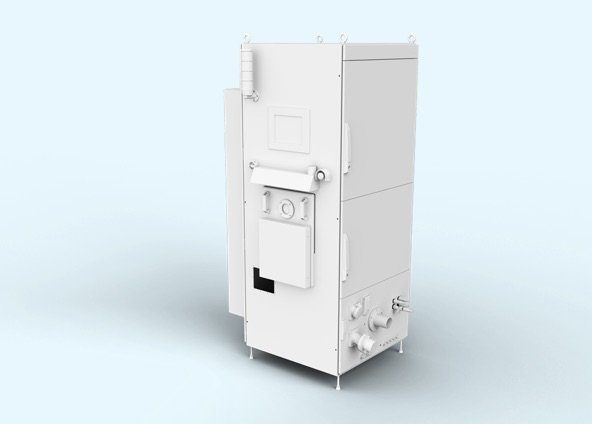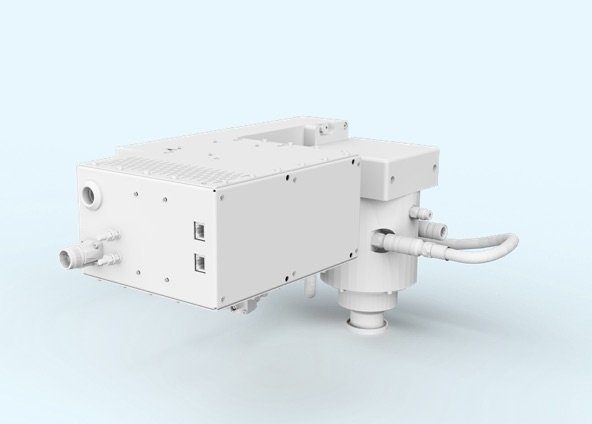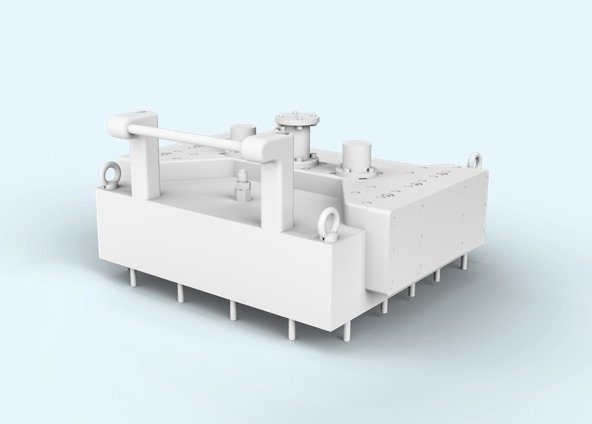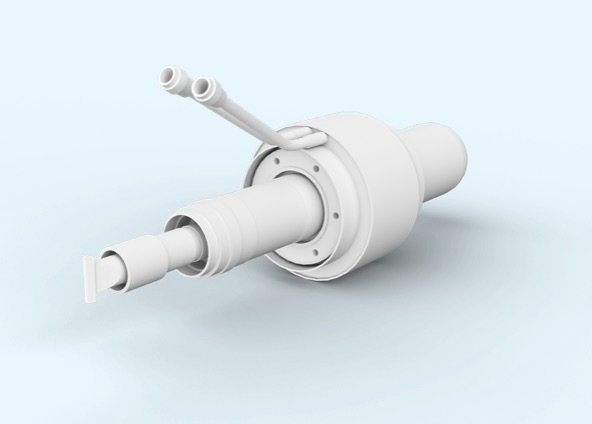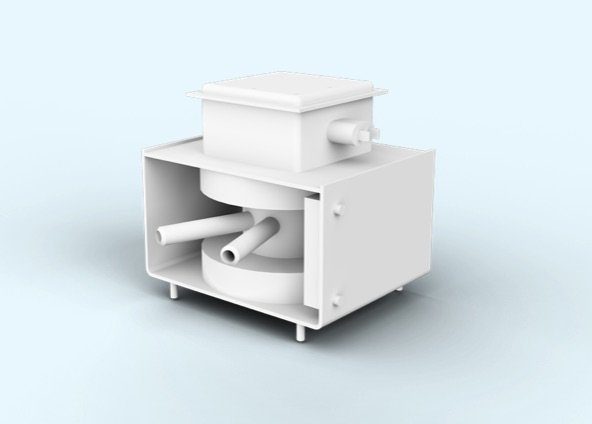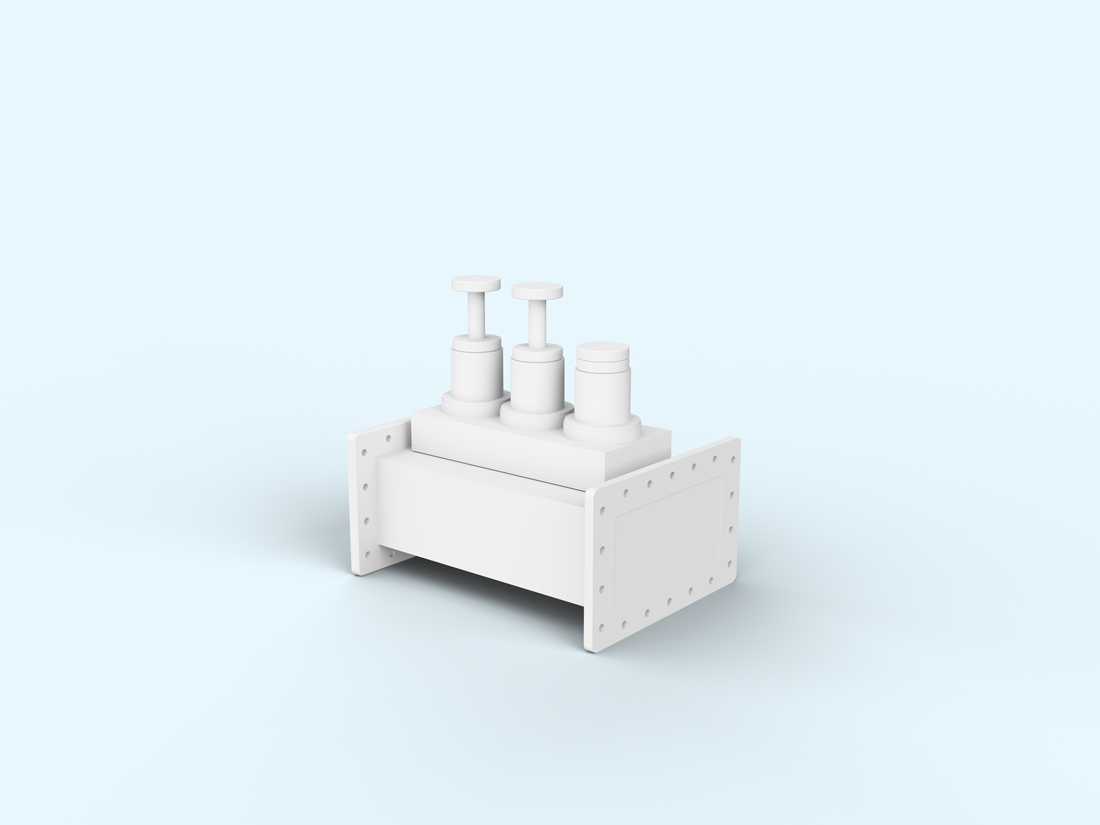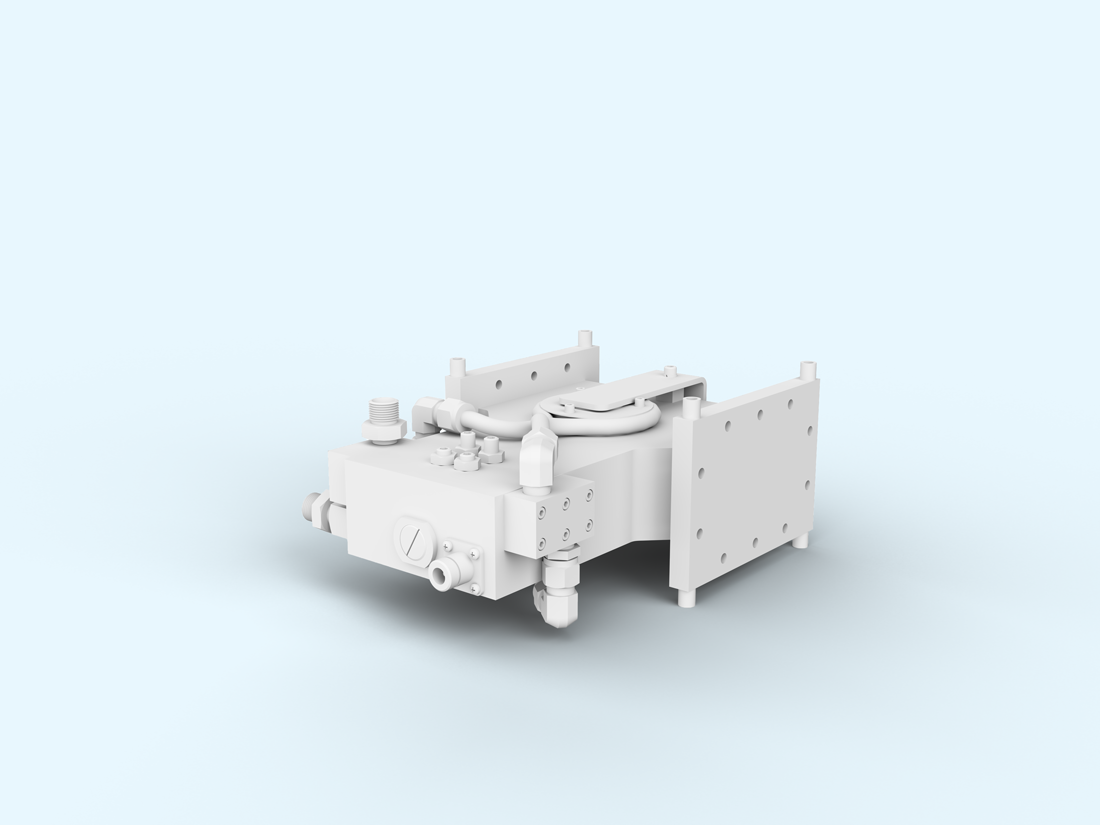Power-to-X
state of innovation
trends and breakthroughs in microwave plasma technology
MUEGGE GmbH, Hochstr. 4-6, D-64385 Reichelsheim, Germany
info@muegge.de
1 Introduction
To comply with future legislation aimed at reducing pollution and given the different designs, ages and capacities of existing plants and processes, the industry needs to have a wide range of technologies from which to choose. The application of process intensification principles using alternative heat sources could contribute to the development of sustainable industrial processes, especially given the growing urgency to move away from fossil fuels and the potential role of clean energy in this transition. The conversion of industrial processes to all-electric power is widely accepted as a solution for the industry due to its potential to significantly reduce the CO2 emissions in a future fossil-free energy supply(1). However, the immense diversity of the industrial sector means that there is no one-size-fits-all solution to achieving net-zero emission targets. Moreover, with heat transfer to different processes being one of the clearly identified bottlenecks in industrial processing, this transition is difficult for many industries that require high temperature processing, high thermal energy rates and short payback periods for investments.
These challenges open up new opportunities for industry's transition to a resilient, energy-efficient, renewable and climate-neutral economy, ranging from implementing commercially available solutions to experimenting with new technologies(2).
Plasmas can be applied to chemical processes at high and low gas pressures, offering several advantages such as a simple one-step process that can be started and stopped instantly, and they provide high energy density for very fast reactions.
New concepts of modular plants and decentralised production facilities are rapidly gaining acceptance in the industry and are relevant to microwave plasma-based technology as it gives new directions to Power-to-X technologies, opening up a new range of mechanical, chemical and metallurgical processing techniques.
Microwave plasma offers several advantages over other plasma technologies, including higher ionisation efficiency, reduced risk of contamination and damage to sensitive components as microwave discharge does not involve electrodes, and a dense non-equilibrium plasma with electron density ɳe = 1013 cm− 3 is generated over a large pressure range. As a result, microwave plasma technology can simultaneously achieve high electron density and high electric field strength, resulting in higher electron temperatures. In addition, the use of microwaves as an all-electric technology is economically attractive because microwave generators are commercially available at 2.45 GHz up to 15 kW and 915 MHz up to 100 kW. Their energy efficiency is high(3), allowing both low electrical energy costs and high productivity to be achieved.
2 Power-to-X, Power-to-Gas
Power-to-X (P2X) and Power-to-Gas (P2G) are generic terms used for technologies that convert grid and/or renewable electricity into carbon-neutral synthetic fuels such as hydrogen, synthetic natural gas, liquid fuel or chemicals. These can be used in sectors that are difficult to decarbonise or, unlike electricity, can be stored for later use.
2.1 Decarbonising / Conversion of CO2
Microwave plasma dissociation and conversion of carbon dioxide (CO2), the main greenhouse gas, has been considered in the context of Carbon Capture and Utilization (CCU) approaches. CCU is the sequestration of CO2 and its conversion into energy carriers or value-added chemicals. Many different routes are being developed and investigated including CO2 fixation, e.g., inorganic carbonates, growing algae for biofuel/biodiesel production, dry reforming of methane (CH4) – eq. 1, the direct conversion of CO2 into carbon monoxide (CO) and oxygen (O2) – eq. 2.
(1) CO2 + CH4 ↔ 2CO + 2H2
(2) CO2 ↔ CO + ½ O2
The resulting CO can then be further processed through the water-gas shift reaction, eq. 3, to hydrogen (H2), important feedstocks for the synthesis of ammonia (NH3), liquid fuels such as synthetic diesel, methanol, etc.
(3) CO + H2O ↔ CO2 + H2
2.2 Hydrogen for fuel and chemical synthesis
Molecular H2 is considered to be the most important fuel for the energy transition. Today, more than 96 % of H2 is produced from fossil resources such as coal, natural gas, and oil. To reduce the environmental impact, new alternative solutions are being developed, such as water electrolysis using electricity from renewable resources, such as wind energy, solar energy, geothermal energy, biomass etc.(4) An alternative technology for the production of H2 is the direct microwave plasma conversion of CH4 contained in biogas or in natural gas, since both feedstocks contain mainly CH4, i.e. up to 60-70 vol% for biogas and >80 vol% for natural gas. In this process there are no CO2 emissions, the electricity/energy input is much lower than for water electrolysis and the co-products, i.e. carbon black (C) obtained mainly in the plasmalysis process at atmospheric pressure – eq. 4 and the C2 fraction - acetylene (C2H2) and ethylene (C2H4) - obtained at moderate pressures – eq. 5, are products with great industrial value.
(4) CH4 ➟~atmospheric pressure➟C + 2H2
(5) 2CH4 ➟ 50 - 150 mbar ➟ C2 H2 + 3H2
In these reactions, the H2 produced is classified as either green H2 or turquoise H2, depending on the feedstock, biogas or natural gas, respectively.
The microwave power generated by the microwave generator must be stable to ensure plasma stability and process and equipment reliability. The use of the latest industrial microwave generator technology allows very close control of the plasma process and improved energy transfer to the CH4 feedstock, resulting in improved process control and efficiency and higher product quality. In addition, MUEGGE's microwave plasma reactors can operate at low and high pressures and can be easily scaled up by placing multiple plasma sources in series or in parallel, thereby reducing the development time to full-scale production – Figures 1a-c and Figure 2. As the transport and storage of H2 is costly, the high modularity and the rapid, inertia-free on/off of the plasma associated with microwave plasma reactors offers the possibility of building plants that can be operated in situ and on demand.
2.3 Nitrogen fixation - fertilisers
Nitrogen is one of the basic elements responsible for the growth of living organisms and is essential for the production of many chemicals such as fertilisers, medicines, explosives and dyes. More than 99% of the world’s nitrogen is in the form of atmospheric N2, which makes up ~78% of the air. However, N2 is chemically inert and therefore inaccessible to most of the organisms and must be converted to a reactive form through a process called nitrogen fixation.
The main practice for introducing nitrogen into the soil is through nitrogenous fertilisers, i.e. urea and nitrates derived from NH3.
The chemical process that has been used for over 100 years to extract fixed nitrogen from the atmosphere to meet the needs of a growing population is the Haber-Bosch NH3 synthesis process. The Haber-Bosch process is a catalytic process in which N2 extracted from the air is reacted with H2 at pressure ~200 bar and temperatures ~500 0C. Today, the annual amount of nitrogen fixed by the Haber-Bosch process has reached 130 million tonnes per year, about 29% of global fixation(5). The Haber-Bosch process consumes almost 1 - 2% of the world's total energy production.
As an alternative technology, more environmentally friendly and less costly, atmospheric pressure microwave plasma assisted nitrogen fixation is generally achieved by the reaction of N2 with O2 to produce nitrogen oxides (NOx), usually a mixture of nitrogen dioxide (NO2) and nitrogen monoxide (NO). In this case, the raw input gas for the plasma is atmospheric air. The reactions to produce NO are favoured by high temperature processing due to the high dissociation energy of N2, eq. 6.
(6) N2 + 3/2 O2 ↔ NO + NO2
Process parameters such as gas composition, flow rate and temperature are of great importance in NOx production, and the precise parameter tuning associated with microwave plasmas allows control of the energy input required for the chemical reactions and the NO2/NO ratio.
In another nitrogen fixation process, microwave plasmas can achieve catalyst-free conversion of N2/air and H2O under ambient conditions. The most studied configuration uses atmospheric-pressure plasma to generate plasma on the surface or inside of water(6), which can produce NH3 (i.e., ammonium ions, NH4+), and other forms of the fixed nitrogen, such as nitrite (NO2–) and nitrate (NO3–).
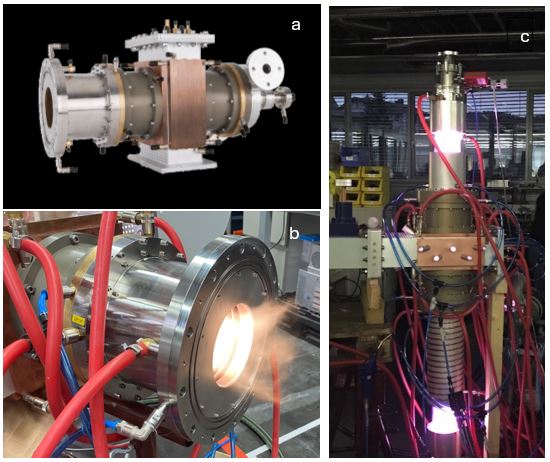
a) 100 kW, 915 MHz APS (atmospheric plasma source);
b) Photo of the 915 MHz APS operated at 75 kW and 2000 L/min air;
c) 100 kW, 915 MHz Downstream source (low pressure)
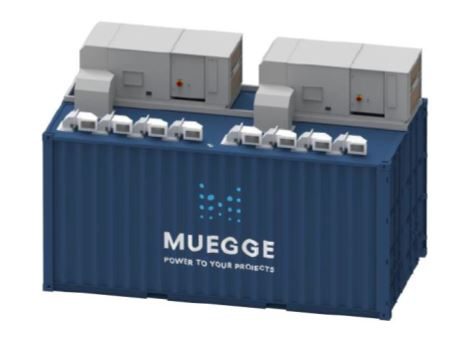
Mobile industrial microwave layout containing up to 8 x 100 kW microwave generators; each microwave generator is connected to its own individual APS
3 Other plasma-assisted processes
3.1. Process gas and waste gas abatement
The degradation into less harmful or more reactive compounds of volatile organic compounds (VOCs)(7) and other chemical pollutants such as NOx¸ sulphur oxides (SOx) resulting from combustion processes, toxic streams(8) containing hydrogen sulphide (H2S), NH3, and perfluorinated molecules (PFCs) - greenhouse gases from semiconductor dielectric-etch tools and plasma enhanced chemical vapor deposition (PECVD) chamber cleaning(9), e.g., CF4, SF6 are also possible using microwave plasmas at low or high/atmospheric pressure.
3.2. Plasma-assisted combustion
The problem of uniform ignition and efficient combustion of a gas mixture is of fundamental technological importance. The oxidation of a fuel proceeds by a chain mechanism, which is very fast. The delay in ignition is limited by the rate at which the active centres are formed, usually by thermal dissociation. For this reason, the overall reaction rate is higher when a chain is pre-initiated and the easiest way to produce free radicals is to break the weakest bond in a molecule. In this sense, microwave plasma offers an exceptional opportunity for combustion and emission control due to its unique ability to produce active species and heat, and to modify transport processes. New reaction pathways, such as atomic oxygen production from collisions between high-energy electrons/ions and oxygen molecules, can be introduced into combustion systems to significantly modify fuel oxidation pathways. As such, microwave plasma assisted combustion is a promising technology to improve engine performance, increase lean-burn flame stability, reduce emissions and enhance low-temperature fuel oxidation and processing.
3.3. CVD Diamond synthesis
Diamond growth at low temperatures (≤400 °C) and over large areas is attractive for materials, which are sensitive to high temperatures and require good electronic, chemical or surface tribological properties. To note that diamond has a record-high thermal conductivity of up to 24 Wcm-1K-1 at room temperature, reaching maximum values of up to 285 Wcm-1K-1 at temperatures near 63 K(10). This makes diamond the material of choice as heat sink for thermal management applications, especially important for modern electronic devices operating in extreme regimes such as high-power switching electronics, high frequency transistors, quantum technologies, optics.
Low pressure microwave plasma enhanced chemical vapor deposition (MWPECVD) at 2.45 GHz and 915 MHz is nowadays a dedicated method for growing single-crystal, nano- and polycrystalline diamond. Other materials deposition such as diamond-like carbon (DLC), nanocarbon tubes, carbon nanofibers on different substrates is possible using microwave plasmas.
4. Microwave plasma applications in energy intensive industries
When applied to modern industries, microwave plasma offers sustainable, cleaner, more controlled and more efficient operations compared to conventional methods. To accelerate the action plan towards climate neutrality and to reduce the carbon footprint of energy intensive industrial applications, microwave plasma can be used as a direct heat source for manufacturing processes related to iron and steel, pulp and paper, glass melting, ceramic and metal powder sintering, non-metallic minerals such as cement, and non-ferrous metals such as aluminium – Figure 3.
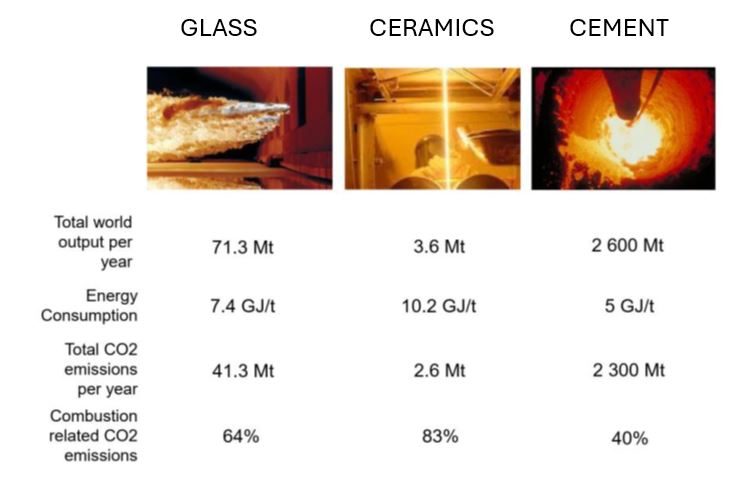
CONCLUSIONS
The key challenges facing industry in the current economic climate are energy transition, digital transition and decarbonisation.
These are very important topics and they are at the heart of our customers' concerns. In order to accelerate the decarbonisation of their businesses, industrial end users will have to switch to so-called 'cleaner' energies and adapt their processes. They will need to use new energy sources, move away from fossil fuels in favour of electrification, and look for new sources of energy savings to reduce their consumption.
MUEGGE's microwave plasma reactors can address some of these challenges; an important advantage of microwave plasmas is that they can be used on demand and therefore the power level can be adapted to the specific and possibly variable load of the inlet gas and process steps. The transfer of microwave plasma technology to some industrial processes will also require improved process selectivity. To improve both selectivity and efficiency, synergy with other technologies and processes must also be considered.
Decarbonisation and its direct relationship with Corporate Social Responsibility (CSR) and Corporate Environmental Responsibility (CER) has become an important priority for MUEGGE to help make better decisions on environmental/social efforts in relation to customers and the supply chain.
As our customers' industrial businesses change, they need to become more sustainable. Cloud computing and other technologies that connect equipment and processes can help industrial end-users reduce carbon emissions and meet environmental targets. MUEGGE's decarbonisation efforts are supported by the use of Industry 4.0 (I4.0) technologies, including IoT devices and data analytics in all microwave generators, which have the potential to improve the energy efficiency of processes by monitoring and analysing real-time data(14). This enables our customers to identify energy-intensive processes and implement measures to reduce energy consumption and carbon emissions. These technologies also facilitate the integration of smart grids and energy management systems into the process. In addition, I4.0 technologies optimise supply chain operations through advanced analytics, automation and predictive modelling.
References
1. B. Elmegaard, F.M. Holm, F. Buhler, Potentials for the electrification of industrial processes in Denmark, The 32nd international Conference on efficiency, cost, optimization, simulation and environmental impact of energy systems, Wroclaw, Poland, October 2019.
2. ROADMAP 2050, A practical guide to a prosperous, low-carbon Europe. Available on-line at https://energy.ec.europa.eu/system/files/2014-10/roadmap2050_ia_20120430_en_0.pdf /3.
3. M. Radoiu, A. Mello, Scaling up microwave excited plasmas—An alternative technology for industrial decarbonization, Plasma Processes and Polymers, 2024, 21:e2300200, https://doi.org/10.1002/ppap.202300200
4. Fuel Cell and Hydrogen: Hydrogen Roadmap Europe: a Sustainable pathway for the European energy transition, on-line at https://www.fch.europa.eu/publications/hydrogen-roadmap-europe-sustainable-pathway-european-energy-transition (accessed 7th April 2024).
5. D. E. Canfield, A.N. Glazer, P.G. Falkowski, The Evolution and Future of Earth’s Nitrogen Cycle, Science, 2010, 330, pp.192-196.
6. Z. Huang, A. Xiao, D. Liu, X. Lu, K. Ostrikov, Plasma-water-based nitrogen fixation: Status, mechanisms, and opportunities, Plasma Processes and Polymers, 2023, 19, https://doi-org.em-lyon.idm.oclc.org/10.1002/ppap.202100198.
7. R.C. Sanito, M. Bernuy-Zumaeta, H-H. Yang, Y-F. Wang, Volatile Organic Compound (VOC) Reduction from Face Mask Wastes via a Microwave Plasma Reactor, Aerosol and Air Quality Research, 2022, on-line at https://aaqr.org/articles/aaqr-22-07-aac22-0266?fbclid=IwAR0aWvILbhOFystetbktNjawab1LCN5a9yqcHBMewMoMLwJcPYKvuX3JIFw, accessed on 12th April 2024.
8. J. Mizeraczyk, M. Jasiński, Z. Zakrzewski, Hazardous gas treatment using atmospheric pressure microwave discharges, Plasma Physics and Controlled Fusion, 2005, 47, B589, https://doi.org/10.1088/0741-3335/47/12B/S43.
9. M.Radoiu, Studies on atmospheric plasma abatement of PFCs¸ Radiation Physics and Chemistry, 2004, 69, pp. 113-120, https://doi.org/10.1016/S0969-806X(03)00455-9.
10. A.V. Inyushkin, A.N. Taldenkov, V.G. Ralchenko, A.P. Bolshakov, A.V. Koliadin, A.N. Katrusha, Thermal conductivity of high purity synthetic single crystal diamonds, Physical Review B, 2018, 97, 144305.
11. A. Schmitz, J. Kamiński, B.M.Scalet, A. Soria, Energy consumption and CO2 emissions of the European glass industry, Energy Policy, 2011, 39, pp.142-155, https://doi.org/10.1016/j.enpol.2010.09.022.
12. E. Benhelal, G. Zahedi, E. Shamsaei, A. Bahadori, Global strategies and potentials to curb CO2 emissions in cement industry, Journal of Cleaner Production, 2013, 51, pp. 142-161,
https://doi.org/10.1016/j.jclepro.2012.10.049.
13. T. Ibn-Mohammed, C.A. Randall, K.B. Mustapha, J. Guo, J. Walker, S. Berbano, S.C.L. Koh, D. Wang, D.C. Sinclair, I.M. Reaney, Decarbonising ceramic manufacturing: A techno-economic analysis of energy efficient sintering technologies in the functional materials sector, Journal of the European Ceramic Society, 2019, 39, pp. 5213-5235, https://doi.org/10.1016/j.jeurceramsoc.2019.08.011.
14. J. Olah, N. Aburumman, J. Popp, M.A. Khan, H. Haddad, N. Kitukutha, Impact of industry 4.0 on environmental sustainability, Sustainability, 2020, 12, p. 4674.

